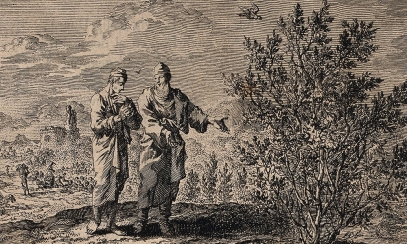
Sacraments Part 4: Confirmation
What you need to know about this often misunderstood sacrament
Confirmation may be the most misunderstood of all our seven sacraments. Perhaps this is because its ritual practices have had such a rich and varied history. Are we made soldiers of Christ? Are we more ‘completely’ baptized? Is it simply a rite of passage for Catholic teenagers?
Even in the early Church, rituals occurred before and after the baptismal bath and before the Eucharistic meal. These included anointing(s), the laying on of hands, and consignation (signing with the cross). Eventually, these actions were reserved to the bishop and, in the West, were separated from baptism and Eucharist. With changes in these practices came changes in theological understanding. (For example, a slight slap on the cheek was added to remind the candidate that he/she was to be strong so as to defend and promote the faith. That gesture is no longer used.) The laying on of hands and the anointing with chrism continue to serve as signs of the strengthening of baptismal grace and the conferral of the gifts of the Holy Spirit.
The sacrament of confirmation is conferred through the anointing of the forehead with sacred chrism, which is done with the laying on of hands and through the words ‘Be sealed with the gift of the Holy Spirit.’ Confirmation increases and deepens baptismal grace, unites us more firmly to Christ, increases the gifts of the Holy Spirit within us, and gives us special strength to spread and defend the faith by word and action.
Like baptism, confirmation is given only once because it imparts a special, indelible, ‘spiritual mark’ or ‘character.’
The bishop is the usual minister of confirmation, though priests may also confer the sacrament. For instance, your pastor may administer all three sacraments of initiation – baptism, confirmation, and Eucharist – to the Elect at the Easter Vigil. Just as the Church did nearly two thousand years ago!
The Holy Oils
On Holy Thursday at the Mass of Chrism, the bishop blesses and consecrates three oils used during the year in our parishes. We use holy oils in four sacraments: Baptism, Confirmation, Anointing of the Sick, Holy Orders, as well as in the dedication of a church and altar.
1. Oil of the Sick is used to anoint the head and hands of a sick person.
2. Oil of Catechumens is used to anoint infants on the chest during baptisms and catechumens during their period of preparation.
3. Chrism is used to anoint the crown of an infant’s head after baptism; the forehead of a confirmation candidate; the hands during a priest ordination or the head during a bishop’s; and the new altar of a church.



